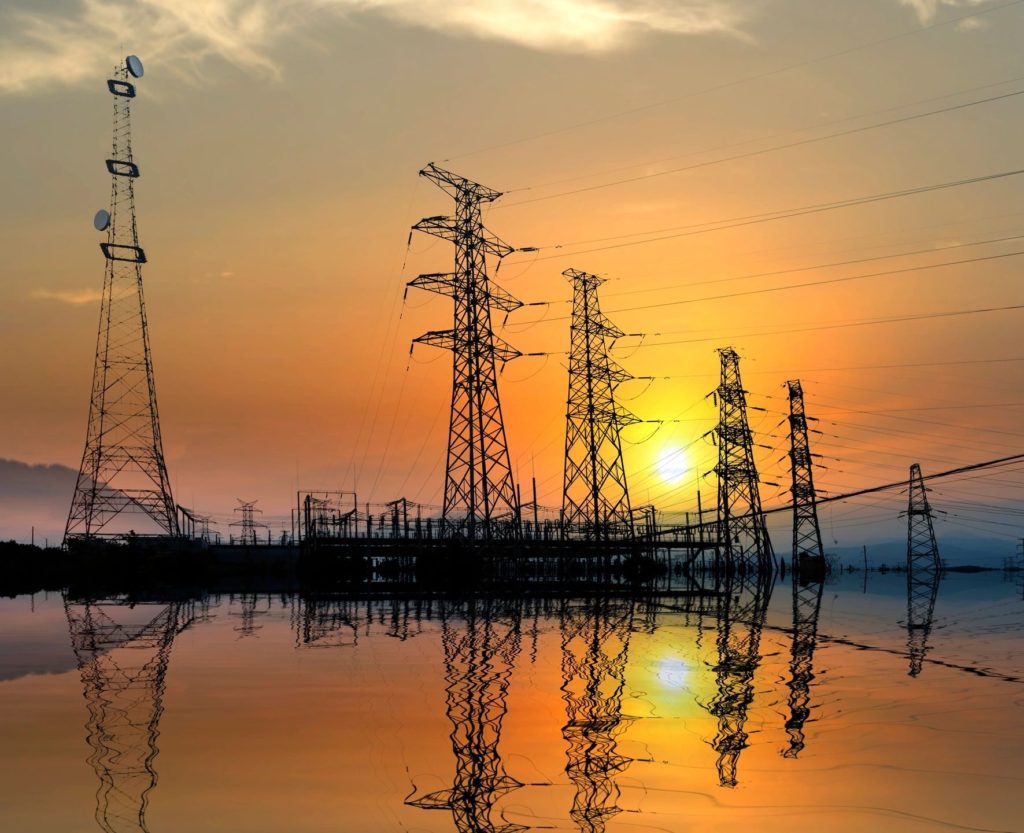
Poll Results Destin Residents Overwhelmingly Oppose Government Run Electricity 88% Oppose Municipalization of Electric Service 95% Want a Vote of the People
Huge majorities of Destin residents oppose the city creating a government run electric service, want the people to decide the issue if needed and want the Destin City Council to stop spending money on the municipalization process, according to a new poll conducted by Family Businesses for Affordable Energy (FBAE).
The Destin City Council has been considering creating a government run electric service by buying the assets of the local utility service. According to the city’s own feasibility service, the cost of such a purchase would be $71 million or more.
The FBAE poll is the first poll to ask the residents of Destin their views on the matter.
The poll found that 88 percent of Destin residents say they would vote ‘No’ on creating a government run electrical service. Another 84 percent of residents believe that their city government should not be in the business of providing electrical services.
“We protect family businesses all over the nation and these are some of the strongest poll results FBAE have ever seen on any issue,” said Alex Ayers, executive director of FBAE. “The people of Destin are angry, and they are adamant: they say NO to a government run electric service and believe Destin cannot afford such a thing.
“Destin voters are sending a loud and clear message to the Mayor and the City Council. They don’t want a government run electric service, and spending money on this folly needs to stop now,” Ayers said.
Other findings include:
- 95 percent say the people should decide this issue in a referendum, not by a vote of the Destin City Council. Only 12 respondents out of 300 polled trust the Council to decide this issue.
- 85 percent of Destin residents believe the city cannot afford $71 million or more to purchase an electrical system.
- 88 percent are satisfied with their current electrical service.
In fact, every argument made by Destin city officials in favor of municipalization – creating profits for city projects, burying power lines, improved service and storm response – were met by opposition of 73 percent or more across the board. Destin residents simply do not believe what the City Council has to say on this issue.
Large majorities of residents believe that if Destin did buy an electrical system, taxes and power bills would increase, service and storm response would suffer and the city would risk financial ruin.
“There is universal opposition to a government run electric service, and representatives of the people need to listen to the people,” Ayers said.
The survey was conducted by Tel Opinion Research for the FBAE. The survey was conducted on November 6 and 7 of this year. The sample consisted of 300 registered voters with a 6 percent margin of error at a 95 percent confidence level.
The complete poll is available here.
The FBAE also responded to a column published November 10 in the Destin Log by Gulf Power representative Bernard Johnson. In the column, Johnson asked the FBAE to stop interfering in the Destin municipalization issue.
“Family Businesses for Affordable Energy works on behalf of family businesses, we do not need Gulf Power or the City’s permission to work to protect the interests of family businesses and we plan to continue to fight for the people of Destin on this important issue,” Ayers said. “We fight for family businesses all over the nation and a government run electric service will severely damage Destin businesses and customers. The findings of our poll make it absolutely clear we are on the side of the people in this fight. And we will not stop until this issue is settled.”

Destin Citizens Should Fight City’s Municipalization Effort
$71 Million Cost Just Too Risky for Business
The Family Businesses for Affordable Energy (FBAE) said today that area businesses should resist Destin, Florida’s, takeover of its electric service, warning business owners will face higher utility rates and higher taxes and fees, while seeing a reduction in service, reliability, and critical storm response.
The city of Destin, Florida, is looking at municipalizing the area’s electric service. In this case, Destin would buy and take control of the current electricity system now provided by Gulf Power, buying all the necessary assets to be the city’s power provider. Under the proposed scheme, Destin would operate its own government run electrical system.
“The results will be disastrous,” said Alex Ayers, Executive Director of the FBAE. “This has been tried recently around the country and business owners have been stuck with the bills.
“We are talking higher taxes and higher utility rates, while service and reliability drop significantly,” he said. “The bottom line is that Destin’s municipalization equals business owners paying a lot more and getting a lot less.”
Destin’s own municipalization study estimates the cost to Destin’s taxpayers will be at least $71 million, an amount of debt that is more than triple Destin’s $21 million annual city budget
It is even questionable if the $71 million initial cost estimate is accurate.
“These experts come into cities like Destin and low-ball the original costs estimates, leaving the city with sticker shock when the real price of municipalization comes in,” he said. “And business owners and taxpayers will get stuck with the bill.”
For example, Destin’s municipalization consultants, WHH, provided purchase cost estimates to the city of South Daytona of $9.5 million, then the price jump to $15.6 million. Fortunately, the voters of South Daytona rejected the city’s municipalization move by a vote of 62 percent.
Another city in Florida, Winter Park, was given a $15.8 million estimate by other consultants. The final price was $42 million to municipalize. In addition, the city of Winter Park lost $11 million in its first four years of government-run electric service.
And in Las Cruces, New Mexico, the city expected municipalization costs to be $30 million. When total costs soared to $110 million, Las Cruces abandoned its effort.
When cities face escalating and unexpected costs for municipalization, they turn to higher taxes, higher fees and higher rates. “The businesses of Destin can’t take this risk,” Ayers explained. “That kind of sticker shock will hurt business, kill jobs, and cause prices to rise for everyone.”
Government run electrical service can’t compete with investor owned utilities when it comes to service and reliability, especially when it comes to storm response, a critical need for locations like Destin. Municipalized cities like Tallahassee, Fort Pierce and Jacksonville have had highly publicized failures when responding to hurricanes and storms.
“Business just can’t afford the financial and safety risk of a city-run electric service,” Ayers said.
###

DOE grid study provides insight into grid reliability
Last April, Energy Secretary Rick Perry request a study of America’s electric grid to examine potential problems and solutions to maintain reliability. The study is of particular importance to family businesses who rely on affordable and reliable sources of electricity to run their businesses. Secretary Perry called for the study to not only examine the effects of renewable energy on the grid, but also develop policy prescriptions to help govern future energy production. Specifically, Secretary Perry sought to understand whether further increases in intermittent renewable energy sources would affect the reliability of the electrical grid and endanger base load power sources. Fears surrounding the study’s findings surfaced on both sides. Utility companies levied reasonable apprehensions about potential federal preemption of state energy policies on national security grounds. Exelon CEO Chris Crane made the case for a diverse energy portfolio and emphasized that nuclear energy’s contribution to baseload power generation was being “squeezed” and that the elasticity of nuclear energy made it an integral part of the power grid. Crane’s concerns are well founded. States like California have already begun to phase out nuclear energy production in the state.
Expectedly, in an attempt to head-off any criticisms of the reliability of renewable energy national green energy business associations like the Advanced Energy Economy, American Council on Renewable Energy, American Wind Energy Association, and Solar Energy Industries Association flooded the DOE with research arguing that the inclusion of more renewables in the power mix would have a measurable effect on system reliability. When the 154-page report was finally released late August, some environmentalist activists predictably belittled the study as a full-blown war on renewables and claimed that the study’s findings were a direct contradiction of what “other energy experts were saying” while others praised it as a fairly well-evidenced overview of the energy markets as they currently stand. Tom Kuhn, the President of Edison Electric Institute, which represents all U.S. investor-owned electric companies stated, “While we are still thoroughly reviewing the study, EEI has long advocated that our customers are best served by public policies that promote a balanced and diverse energy mix, which includes both traditional and renewable energy sources, and that also recognize the vital role 24/7 energy sources play in sustaining a secure, reliable, and resilient energy grid.” Kuhn went on to affirm the importance of energy production as an integral component of a robust infrastructure network that deserved investment, specifically pointing out the importance of defending energy infrastructure in the face of both man-made and natural disasters.
Ultimately the study details a few key findings. First, that market forces are driving baseload retirements, specifically the low price of natural gas as the largest contributor to maintaining older base load power plants. Nevertheless, the study indicated that coal, oil, and nuclear power generation still faces threats under the current market conditions, specifically with the difficulty in covering fixed costs in a market environment with cheap natural gas, subsidies for renewable energy sources, and government-mandated renewable energy goals. The report also pointed out the resiliency of coal-fired power plants and the stability associated with coal prices in comparison to the volatility of natural gas, as a positive for the continued use of coal power plants as part of base load production.
Our future energy grid must rely on sources capable of providing continuous output for base load power partnered with economically stable sources of electricity during peak load hours. States should examine their current goals, mandates, and subsidies for renewable energy production to ensure reliability and fair economic competition with base load production. We look forward to working with states to ensure family businesses are provided with affordable and reliable energy sources.

Blog: US House of Representatives voting on bills to improve cross border energy infrastructure
On Wednesday, the House will take up two energy bills that aim to modernize the Untied States’ energy infrastructure. Back in June, Energy and Commerce’s Subcommittee on Energy and Power began considering these bills. Named the “Promoting Cross-Border Energy Infrastructure Act,” and the “Promoting Interagency Coordination for Review of Natural Gas Pipelines Act,” both bills focus on international cross-border pipelines which key players in the oil and natural gas industry are watching closely.
Earlier this year, the Senate drafted a letter requesting that any revisions of NAFTA consider the international movement oil and natural gas between the US, Canada, and Mexico. Born from that letter, the Promoting Cross-Border Energy Infrastructure Act is designed to expedite the process of obtaining permission from the federal government to construct structures that traverse American jurisdictions. One major complaint of American or oil and natural gas producers has been the lengthy and tedious permitting process that they must endure to obtain permission to build across the border. Republican lawmakers believe that the arduous permitting process encumbers companies and the legislation would “establish a predictable and transparent process to construct of cross-border pipelines and electric facilities”.
The Promoting Interagency Coordination for Review of Natural Gas Pipelines Act similarly addresses FERC’s role in the permitting process. In addition to requiring that siting processes be publicly disclosed, the bill encourages coordination between FERC and other participating agencies in order to expedite environmental impact reviews on for natural gas pipeline construction. Rep. Bill Flores, the author of the legislation commented, “America is one of the world’s top oil and gas producers thanks to the shale revolution,” Flores said. “Our energy infrastructure and permitting process must be updated to reflect America’s abundance of domestic energy resources. Modernizing the permitting process for the nation’s pipeline infrastructure allows us to efficiently and safely bring those resources to our downstream assets, ultimately to consumers, to power our economy, and to give opportunities to our hard-working American families.”
Chairman Walden of the House Energy and Commerce Committee praised both bills as prudent steps to putting consumer interests over those of bureaucrats and activists. With energy increasingly becoming a major cost to family owned and operated businesses, Family Businesses For Affordable Energy is encouraged by the steps Congress is taking to eliminate the red tape that hinders America’s economic growth.

Blog: President Trump Kicks Off “Energy Week”
President Trump has designated the last week of June as “Energy Week”. Policy weeks have become a trademark of the Trump presidency, and for family businesses, the consequences of this Energy Week could be welcomed by many who are plagued with volatile energy costs. The common thread of Energy Week will be a renewed reliance on traditional energy sources, and dominance of U.S.-based fuels in the export market. The reversal of Obama-era energy policy was a key tenant of the President’s campaign, and based on his Energy Week schedule, Trump aims to make good on that promise. Now, Trump is looking forward, forging actionable plans to shape America’s energy future. In his first 150 days, the president has used his executive power to lift regulatory barriers to domestic energy production and has empowered the Interior Department to begin revisions of Obama-era fracking regulations.
The President has been outspoken on reducing regulations, providing greater access for energy extraction purposes, and encouraging energy production to help lower the cost of our energy production needs. While specifics on the President’s Energy Week plans are scarce, it is known that he will discuss oil and natural gas exports with Indian Prime Minister Narendra Modi when he hosts here today at the White House. On Tuesday, EPA Administrator Scott Pruitt will appear before a Senate Appropriations subcommittee where he will deliberate on the President’s spending blueprint. Energy Secretary Rick Perry will likely offer a preview of some of the President’s priorities when he speaks Tuesday with analysts and executives at the U.S. Energy Information Administration conference in Washington – agenda here. On Wednesday, President Trump will meet with Governors and Native American tribal leaders along with Energy Secretary Rick Perry. This meeting will precede a Thursday panel in the House Natural Resources Committee that will explore energy industry access to federal lands – link here. Finally, the President Trump will host and event at the Energy Department on Thursday where he will focus on how the sale of U.S. natural gas, oil, and coal helps strengthen America’s influence globally.
While President Trump is expected to place his policy focus on traditional energy sources, he is expected to describe openings for other energy exports, including U.S. technology that harnesses power from the wind and sun, and a new generation of advanced and modular nuclear reactors. Many in the industry have argued that the licensing rules for new reactors are cumbersome and convoluted, discouraging investment in an inexpensive and environmentally friendly energy source. There are hopes that President Trump will eliminate these hurdles.
In addition to making it easier to produce traditional forms of energy, the Bureau of Land Management is currently finalizing environmental reviews to allow leasing of federal land for the purpose of installing solar energy collectors in Nevada. The Dry Lake region on Nevada could be the first federal land installation of solar power generation in the country.
Streamlining the energy permitting process and reducing regulations will drive down costs, which is welcomed news for many family-owned and operated businesses with tight margins. FBAE is hopeful that the changes highlighted during Energy Week will lift the burden that stifles job creation and holds back our economic recovery.

Blog: Energy Infrastructure in the Trump Presidency
While large-scale energy projects seem inconsequential to local family businesses, the unpredictability of a volatile energy market can financially squeeze these vital contributors to our economy. Yesterday, President Trump spoke to a crowd at the Rivertown Marina in Cincinnati, Ohio about his long-awaited infrastructure plan, providing a broad outline of his priorities. In addition to reducing permitting time for projects from 10 years to 2 years and “slashing regulations to speed up the decision-making process,” Trump has made overtures to enhance infrastructure in the energy sector. While specifics have remained scarce, the president has made clear his commitment to eliminating burdensome rules hindering oil and gas exploration.
The Rivertown comments come after Trump’s nominations of Robert Powelson, and Neil Chatterjee to FERC in May. Progress on several natural gas pipeline projects was stalled by the lack of a quorum, causing a number of energy groups to prod the President to fill the positions at FERC. Now, the commission has $50 billion in energy projects to address and is working through proposals to reform wholesale power market structures. Another large component of President Trump’s $1 Trillion plan is the completion of the Keystone XL and Dakota Access pipelines, which he cited as examples of his administration’s commitment to strengthen America’s energy infrastructure. “Nobody thought any politician would have the guts to approve that final leg,” Trump said. The White House statement indicated that Trump will dedicate $200 billion in his budget this year to energy infrastructure. The completion of these energy pipeline projects will bring welcome relief to small, family-owned businesses.
Improving America’s energy infrastructure can help to reduce energy costs for family businesses by making it easier for energy resources to come to market. Transporting crude oil via pipeline reduces the cost of transportation by 50-60 percent compared to rail transport. In addition to energy transportation infrastructure, the development of more energy efficient electrical grids will also reduce the cost of energy for family businesses across the country. As we begin to overhaul and expand our energy infrastructure it is important that we do so in a way that helps reduce energy costs prepares us for the future ways we will use energy.

Blog: President Trump’s budget supports affordable energy
On Tuesday, President Trump released his 2018 budget. While the President’s annual budget usually isn’t enacted into law, it provides an important blueprint of where the administration will be focusing its efforts. If ratified, president Trump’s proposal would fulfill several key campaign promises, namely, the increasing funding for energy production, defense, and homeland security initiatives.
From an energy perspective, the President placed the highest priority on reducing energy costs and developing America’s natural resources, stating “A consistent, long-term supply of lower-cost American energy brings with it a much larger economy, more jobs, and greater security for the American people.” In addition to relaxing offshore drilling restrictions, the administration’s budget document includes a plan to open Alaska’s Arctic National Wildlife Refuge (ANWR) for oil drilling by 2022. Such a plan, if enacted, would raise $1.8 billion by 2027.
The Department of Energy faced reductions under the President’s budget, with cuts of $3.1 billion, or 18 percent. One component of that cut is the largely bipartisan federal renewable energy program known as the Advanced Research Projects Agency—Energy, or ARPA-E. A hallmark of bipartisan cooperation since it was created less than a decade ago, ARPA-E was launched under President George W. Bush as part of a broader package to encourage American innovation.
Fortunately for the President, several congressional Republicans are already on board with many his priorities, eager to roll back the preceding administration’s activism. Arizona Representative Paul Gosar commented, “Kudos to the Trump Administration for reducing bureaucratic blight within the EPA by supporting a true all-of-the-above energy strategy and providing much-needed relief to rural communities and local stakeholders.”
One idea that some Congressional Republicans are less excited about is the President’s proposal to sell off half of the Strategic Petroleum Reserve. Another revenue raiser for the federal government, the budget predicts sales would raise $16.5 billion over 10 years. However, many on the right are anxious about the national security ramifications of such a plan given the unstable geopolitical climate.
Ultimately, the President’s budget is interpreted by Congress as a strong suggestion. We will likely see Congressional appropriations bills that will reflect many of his energy priorities.

U.S. industry seeks faster permits, simpler rules in Trump regulation reset
By Valerie Volcovici and Timothy Gardner | WASHINGTON
U.S. industry groups have told President Donald Trump’s administration that they want two main things from his promised regulatory overhaul: a speedier permit process and simpler environmental rules.
Associations representing the drilling, refining, mining, and building industries have submitted hundreds of pages of documents to the Commerce Department and Environmental Protection Agency in recent weeks, outlining regulations they want to see eliminated or modified.
The comments, many targeting the EPA, come in response to a pair of executive orders Trump signed during his first weeks in office, meant to cut the regulatory burden on companies. Trump and the Republican-controlled Congress have already moved to rescind a slew of Obama-era environmental protections, including some aimed at combating global climate change.
The EPA’s regulatory reform office alone has received remarks from more than 65,000 people and groups, many of them criticizing the regulatory rollback plan as a potential threat to public health. But business groups have embraced the plan, calling it the best chance in more than a decade to reshape the regulatory landscape and boost growth, without undermining air and water quality.
“Last time I remember this was 2001. That was the last big opportunity to make some changes,” said David Friedman, vice president of regulatory affairs for the American Fuel & Petrochemical Manufacturers industry group.
That year, then Vice President Dick Cheney chaired an energy task force that produced a National Energy Policy report, a road map to boosting domestic systems and supplies. Much has changed since: U.S. oil and gas production hit all-time highs during the administration of former President Barack Obama, helped by high crude prices and improved drilling technology.
This time around, industry groups appear focused on easing the permitting process for new facilities and installations, according to a Reuters review of the comments.
A common refrain, for example, is for Trump’s administration to reject a planned tightening of ozone rules under the U.S. Clean Air Act’s National Ambient Air Quality Standards. Several groups said this would expose them to increased permitting hurdles for operations and new facilities.
Several groups mentioned other permitting requirements under the Clean Air Act that they say are redundant. These include the New Source Performance Standards, the Maximum Achievable Control Technology rules and the National Emissions Standards for Hazardous Air Pollutants.
“We have one proposal to replace eight different regulations with one that achieves the same environmental benefit but substantially reduces the cost of compliance,” said Rosario Palmieri, vice president for regulatory policy at the National Association of Manufacturers.
The American Petroleum Institute representing oil and gas companies and the Edison Electric Institute, representing electric utilities, are seeking changes in the way companies must account for greenhouse gas emissions.
Comments from members of the public and environmental groups revealed worries that this process would undermine environmental protections. The EPA’s comment period ended on May 15.
Jeff Baker, a military veteran and energy investor from Alabama wrote: “I implore you, as defenders of our nation’s health and security, to avoid shortsighted steps that might create prosperity for a few in the short term, at the expense of the many in the long term.”
Trump’s administration requested the comments from industry as part of two similar and concurrent processes, stemming from his executive orders.
The first order, issued on Jan. 24, directed Commerce Secretary Wilbur Ross to review which U.S. regulations were burdens for domestic manufacturing. The Commerce Department solicited feedback from industry as a result of that order, with a March 31 deadline.
Ross told Reuters in an interview last week that the department was condensing the comments into a series of recommendations that could be presented to Trump as early as this month. [nL1N1IB240]
The second order was issued Feb. 24, directing all U.S. agency heads to launch a process to identify regulatory burdens. Each agency has its own timetable. The EPA, which is taking the brunt of the feedback, started its public comment period on April 11 and closed it this week.

Zinke rolls back restrictions on offshore energy research
by John Siciliano
Interior Secretary Ryan Zinke took new actions on Wednesday to reverse the Obama administration’s restrictions on mapping the nation’s offshore oil and natural gas resources.
The White House got out ahead of Zinke in announcing actions to open up the Atlantic Ocean and the outer-continental shelf to companies ready to begin deepwater surveying to understand how much oil and natural gas is actually there.
Zinke’s action was the latest step in implementing President Trump’s America First offshore energy strategy by “reversing an Obama administration action to halt scientific research in the outer-continental shelf,” said White House deputy press secretary Sarah Sanders.
Zinke later said the move would restore research about the nation’s offshore resources after a more than 30-year hiatus on conducting seismic surveys and other forms of scientific research.
“Allowing this scientific pursuit enables us to safely identify and evaluate resources that belong to the American people. This will play an important role in the president’s strategy to create jobs and reduce our dependence on foreign energy resources,” Zinke said.
Wednesday’s action by the Interior Department reverses a decision made by the Obama administration’s Bureau of Ocean Energy Management “to deny the permit applications” for companies looking to conduct seismic surveys off the Atlantic coast, the agency said.
Zinke will await a remand by the Interior Board of Land Appeals of the permit denials made by the Obama administration, which will begin the review process toward approving them. Environmental groups have been opposed to the use of seismic survey tools because they say they harm marine mammals. But the Interior Department said for nearly 20 years it has “invested over $50 million on protected species and noise-related research, including marine mammals.”
The agency added that the seismic surveys “are not expected to have significant impacts on marine mammal populations or the environment given the use of advanced technology and other safeguards that are currently required.” It said the agency employs measures and safeguards to “reduce or eliminate” harm to marine life.
The Bureau of Ocean Energy Management’s “mission is to manage the development of our nation’s offshore resources in an environmentally and economically responsible way,” said the bureau’s acting director, Walter Cruickshank. “We will continue to keep the public informed as we renew our efforts to evaluate these permits.”
The bureau estimates that offshore reserves equal nearly 90 billion barrels of recoverable oil and 327 trillion cubic feet of natural gas. In 2016, offshore drilling accounted for 72 percent of the oil and 27 percent of natural gas produced on federal lands.
The effort is part of a laundry list of reviews and regulatory repeals that Zinke has been directed to conduct under executive orders Trump signed late last month.
Zinke finished the third of a four-day visit Utah on Wednesday. The trip is meant to hear from groups in the state through a series of public listening sessions. The sessions will be used to make decisions on potentially reversing former President Barack Obama’s controversial designation of the Bears Ears national monument in Utah.
The Trump administration said Obama’s decision to name the monument was rushed and did not take the time to hear from groups in the state before making a decision that curtails the use of the land for other purposes.
Zinke’s agency will be in Arizona next week as part of an effort to save the Navajo Generating Station, the largest coal-fired power plant in the West.
The department will host four listening sessions, May 15-19, in Arizona, where members of the public and local, state and tribal officials will speak on the future of the power plant. The plant is slated to close at the end of 2019.
The power plant has proven too expensive to operate given increased competition from other power plants that use natural gas to produce electricity. The owners of the plant have been in talks with Zinke and the Navajo Nation, which leases the land the plant is on, to find a way to keep it operating. Keeping the coal plant running is part of the president’s plan to restore coal jobs.
Originally posted at: http://www.washingtonexaminer.com/zinke-rolls-back-restrictions-on-offshore-energy-research/article/2622732

Pro-energy agenda saves families money
Pro-energy agenda saves families money
By Rep. Krisit Noem
If you’re a family making less than $50,000 annually in South Dakota, you likely spend double the national average on energy every year. It’s one of the largest monthly expenses for many, so if we have the opportunity to drive those costs down, we ought to take it.
When former President Obama was first running for office, he outlined an energy agenda that, as he said, would “necessarily skyrocket” electricity rates. Over the course of the next eight years, his administration implemented provisions that made affordable energy more and more difficult to access. His boldest move promised to increase costs by as much as $17 billion nationwide and put a quarter-million people out of work annually, according to some estimates.
In South Dakota, analysts believed the plan would force electricity prices to rise 30 percent on average and 36 percent during peak times.
In addition to being costly, many questioned whether President Obama’s regulatory actions were within the Executive Branch’s authority. As a result, the Supreme Court temporarily blocked the administration’s proposal and Congress passed legislation to stop it, although President Obama chose to veto that effort.
I believe our energy challenges can be solved, but the answer is innovation, not regulation. I’ve been very encouraged by the Trump administration’s actions on this front. In late-March, President Trump signed new Executive Orders to roll back many of the Obama administration’s overreaching energy regulations and I was honored to join Interior Department Secretary Ryan Zinke hours later as he signed Secretarial Orders reflecting that same agenda. Their actions help clear a path so market-driven ideas can lead the way forward.
By prioritizing innovation, I’m optimistic we’ll see lower costs, a revved up economy that supports good jobs and higher wages, and a decrease in our reliance on foreign energy from volatile regions of the globe. I’m also hopeful that by allowing innovation to lead, we’ll be able to strike a balance between energy production and environmental protection in a way that doesn’t cripple the economy.
There is almost no profession that values the sustainability and integrity of the land than a farmer or rancher. Our livelihoods depend on it. During planting season when I was a kid, I remember climbing into the tractor to take over for my dad and almost always finding a tiny, purple prairie pasque inside. My dad loved that flower and told me countless times how special it was, as it seemed to grow best on native grasslands. It’s an image I don’t forget.
American ingenuity can address even the toughest challenges, but I don’t believe the government is the best facilitator for that innovation. Instead, we need to give folks the freedom to pursue smarter technologies and finally drive down energy costs for South Dakota families.

